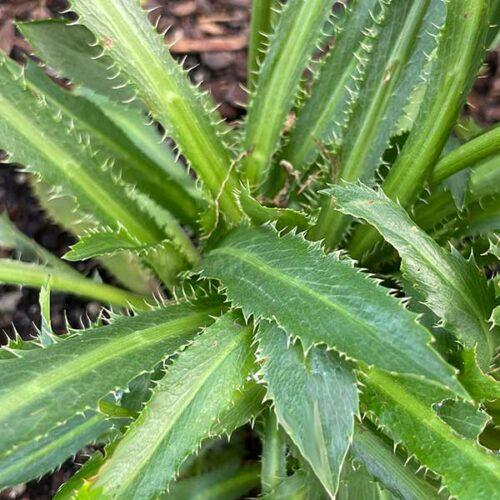An essential ingredient in Pho, Culantro or Ngo Gai is related to Cilantro however it is a different plant.
Although it is widely grown in Southeast Asia, Culantro originally comes from Central America. It is regarded as a very healthy leafy green, high in calcium, beta-carotene, riboflavin and iron.
The Botanical Name is Eryngium foetidum and common name are many including : Mexican coriander, Spiny Coriander and Serrated Coriander.
So an Asian Vegetable or more correctly a Central American Leafy Green that also has a flavour and texture profile that balances that of Pho, and thats important.

How to Grow Culantro – Ngo Gai
This is a plant that grows well in light shade, and being from tropical and sub tropical climates it needs a warm climate to thrive. So in cooler climates plant it in late spring to early summer.
- Find a position in light shade. This helps prevent bolting
- Dig the soil over well and remove weeds.
- Prepare a humus rich fertile soil by adding organic matter and aged cow manure.
- Plant seeds directly and keep moist.
- Once the seeds germinate mulch around the plants to maintain a cool moist root run.This also helps present bolting.
- Water regularly applying a seaweed/fish fertiliser once every 3 weeks.
Top Tips for growing Culantro or Ngo Gai
- Growing in shade not only reduces bolting but produces leaves that are more tender.
- Remove flower buds as they appear to prolong growth.
- Protect from frosts
- Keep soil moist at all times.
Harvesting Culantro.
- The leaves of Culantro all grow from the base, the plant does not form stems. Individual leaves are wide and serrated and it is easily distinguished from Cilantro, also the taste is said to be similar.
- Harvest using a sharp knife or garden scissors.
